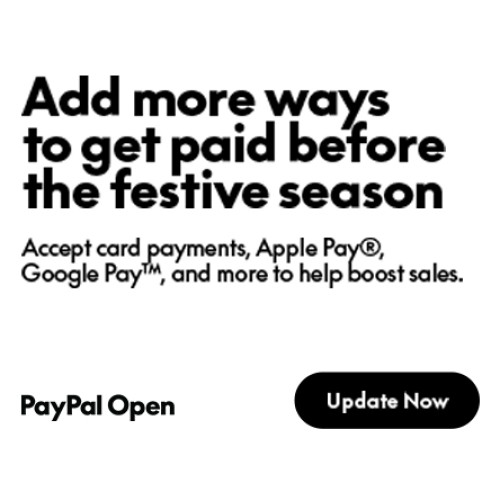Why aren’t they clicking? Let us understand the hidden trust gap that’s costing you leads. You’ve optimized your website for SEO. You’ve spent a chunk on design. You’re even getting a decent stream of traffic. But what about conversions? People are just crawling. Visitors peek, scroll, and vanish!
Have you ever wondered why it happens? Because they don’t trust you yet. In a world flooded with websites screaming for attention, trust isn’t a given; it’s earned in milliseconds.
Think about it. Would you hand over your phone number, let alone your money, to a business that feels sketchy, confusing, or just plain? Probably not. Neither would your potential customers.
Website credibility isn’t about looking fancy—it’s about feeling legit. It’s the invisible thread that turns visitors into leads and leads into loyal customers.
So, how do you look trustworthy and feel credible, digitally?
The Truth About Credibility: It’s Not Just Visual
Credibility isn’t just about aesthetics. Website credibility is the trust your site earns the moment a visitor lands on it. Think of it like a first impression.
A beautiful site with poor messaging, confusing navigation, or hidden contact info can still lose trust. Website credibility is built across four layers:
Visual trust (clean design, logos, consistency)
Content trust (clear messaging, proof points, helpful info)
Emotional trust (brand tone, empathy, user journey)
Functional trust (site speed, mobile-friendliness, security)
It’s a multi-sensory experience where every element says: “You’re safe here. Let’s do business.”
Let’s explore the eight building blocks of website credibility to convert leads into customers, step by step.
1. Make Your Value Instantly Obvious
Your homepage is your digital first impression. Think of it as your elevator pitch, but only shorter. This is where many businesses go wrong. They talk about what they do before explaining why it matters. Instead, lead with clarity and confidence.
Look at Zen Windows: Their service headline, “From Zero-Hassle Quotes To Easy Installs,” is crisp, benefit-focused, and easy to digest. It gives the user a reason to stay and scroll because it promises relief from the usual pain of home improvements.
How to apply it:
Write your homepage like a conversation, not a billboard.
Lead with the result your customer wants, not your company name.
Test your headline with tools like Nielsen Norman’s 5-second test: Can someone tell what you offer in 5 seconds?
2. Show Real People, Not Just Pixels
Humans connect with humans, not interfaces. Websites that feel personal naturally earn more trust. This is especially true for service-based businesses, where users are evaluating who they’ll be working with—not just what they’ll get.
W Dental in Vancouver excels at this by featuring treatment photography shots and each dentist's expertise and educational details on their homepage. It helps users get familiar with the dentist's work style, even before booking an appointment.
How to apply it:
Include founder or team photos with short bios
Add video introductions or testimonials
If you're remote or product-based, use customer unboxing videos or team “at work” behind-the-scenes
When users can see who they're dealing with, they feel like they’re dealing with someone real—not just a screen.
3. Use Trust Indicators Where They Matter Most
Trust signals work, but only when placed strategically. Most websites either overcrowd the homepage with logos or hide them in the footer where they get ignored. Instead, your website can be trustworthy if you include accolades & achievements, authorization, social proof, and real success metrics.
Halperin Legal which is a personal injury lawyer sets a great example. They feature case results, media mentions, certifications and awards, giving nervous visitors a reason to act. They also weave these trust signals naturally into their content flow, so credibility doesn’t feel forced, but rather earned as users scroll.
Types of trust indicators to include:
Reviews from platforms like Google or Clutch
“As seen in” media placements
Case study snapshots (e.g., “Helped XYZ cut costs by 42%”)
Legal certifications, security badges, or client logos
Where to place them:
Right next to lead forms
On your pricing or service pages
Near the “Book Now” or “Start Free Trial” buttons
People are more likely to click when they feel reassured.
4. Educate First, Sell Second
Selling is easier when you stop selling. Instead, educate your visitors. In a trust-based digital economy, the brands that win are the ones who share knowledge generously. This approach builds long-term credibility and naturally leads to conversions, especially from decision-stage leads who’ve already benefited from your content.
For example, Alastair Kane Search Marketing uses blog content to showcase expertise without pushing services. Their guides break down B2B SEO into understandable chunks, which builds trust and keeps users returning if someone is looking for B2B SEO.
Ways to educate while building trust:
Write blog posts addressing your audience’s top 5 concerns
Use simple infographics and how-to videos
Offer free templates or lead magnets (like “SEO audit checklist” or “Legal agreement templates”)
Host a “Live Chat Q&A” using JivoChat to field questions weekly
5. Don’t Hide the Contact Info
Ever landed on a website, ready to book, and then spent 2 minutes hunting for a phone number? That friction costs you leads.
But it’s not just about contact placement, it’s about perception. When contact options are hard to find, users subconsciously question if you're avoiding responsibility or customer interaction. That's a red flag.
Let's say Zendesk – They use a clear, sticky header with easy access to “Contact us” and “Login,” keeping help always one click away. Thus, making it easy to reach out anytime while scrolling.
To build functional trust:
Place a contact link in the top right header
Offer multiple options (chat, form, phone, WhatsApp)
Use live chat as a low-barrier entry point, ideal for hesitant leads.
JivoChat can also trigger proactive messages, like:
"Hi! Need help choosing the right package?" That simple push can boost conversions by 30–40%.
6. Keep Your CTAs Empathetic and Contextual
Forget robotic CTA buttons like “Submit” or “Get Started”. Empathetic, context-aware CTAs convert better because they align with what the user is thinking. Your call-to-actions (CTAs) shouldn't stress "Buy Now" but instead assist visitors toward solving their issues.
FreshBooks, for instance, uses buttons like “Try it free for 30 days” and “Compare All Plans”, which helps take the next steps rather than aggressive pitches.
Examples to try:
Instead of “Book Now”, Try “Schedule a Free Call”
Instead of “Download”, Try “Send Me the Checklist”
Instead of “Get Started”, Try “See How It Works”
Add mini-messages below the CTA, like:
"No credit card required" or “Takes less than 2 minutes” to ease friction.
7. Build With Mobile Trust in Mind
Mobile design isn’t optional; it’s credibility-critical. If your website is slow, cramped, or broken on mobile, you’re not just annoying visitors, you’re actively signaling untrustworthiness. Make your website user-centric by understanding the user’s needs and preferences.
Take a look at Notion or Mailchimp on mobile. Their content stacks beautifully, their buttons are thumb-friendly, and nothing feels out of place.
Quick mobile-friendly tips:
Use Google’s Mobile-Friendly Test
Ensure your chat widget is mobile-responsive
Compress images for fast load times
Keep headlines short for smaller screens
Offer mobile-first features like click-to-call buttons or WhatsApp integration—especially for service-led businesses.
8. Use Storytelling to Bridge Emotion and Action
Credibility isn’t all logic, it’s also emotional. Use storytelling throughout your site to show the “why” behind your business, the transformation you offer, or the journey of a real client.
But don’t just tell the story; structure it. A simple narrative arc of PSR (problem - solution - result) is powerful. It helps potential customers see themselves in the story and imagine what success with your product or service could look like.
Check out Trello’s customer stories section. They share use cases from small teams to global enterprises, creating a sense of “people like me use this.”
If you're in a technical or IT-related industry, storytelling can also include team achievements like AWS certification, which demonstrates verified cloud expertise. This not only builds trust but positions your team as qualified professionals in a competitive digital landscape.
How to use storytelling:
Turn testimonials into mini-case studies
Share your founder’s mission or brand journey
Use narrative-driven blog content (e.g., “How we helped X company double Y in 3 months”)
This builds connection and reinforces that you’re not just capable—you care.
What Breaks Trust Instantly And How to Fix It?
Even with the best intentions, some common mistakes can instantly damage a website’s credibility:
Stocky visuals: Generic stock photos scream inauthenticity. Use real images or custom illustrations wherever possible.
Overused jargon: Writing that feels like a pitch deck turns people off. Keep it conversational and specific.
Broken links or slow load times: These technical issues make your brand feel neglected.
Outdated content: A blog last updated in 2020 can signal abandonment. Fresh updates build active trust.
Fix it fast: Run regular audits for broken links, refresh old blog posts, and use tools like Hotjar or Google Analytics to spot bounce hotspots.
Little things break trust quickly, but fixing them is often low effort with a high return.
Conclusion: Trust Converts. But You Have to Design for It.
Credibility is not practically added but developed and firmly grounded like the ingredients in a cake. Starting from the headline to the CTA button on your website, all you do contributes to either building or losing trust.
Use messaging that understands your visitor. Use visuals that feel human. Add live chat to start real conversations. And above all, make it easy to believe in you. Because at the end of the day, people don’t convert on websites they visit. They convert to websites they trust.



Login and write down your comment.
Login my OpenCart Account